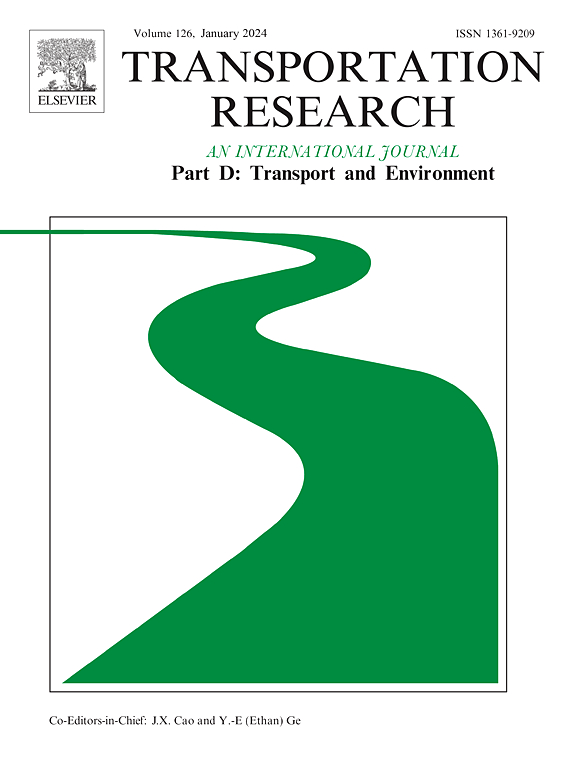按需交通替代固定路线交通的碳减排潜力
IF 7.7
1区 工程技术
Q1 ENVIRONMENTAL STUDIES
Transportation Research Part D-transport and Environment
Pub Date : 2025-09-10
DOI:10.1016/j.trd.2025.104976
引用次数: 0
摘要
本研究考察了按需交通在减少碳排放方面的潜力,与中国上海的固定路线交通相比,这两种服务都使用电动汽车。我们首先分析了碳减排在不同时期的变化。结果表明,按需公交在傍晚和夜间时段替代固定路线公交更有效地实现了碳减排。接下来,我们使用CatBoost模型来探讨路线特征对碳减排的影响。对于人均碳排放量的减少,需求、路线长度和路线曲率是重要的因素。另一方面,当考虑实现碳减排的最大需求(临界需求阈值)时,乘客在路线上的分布(分段载客率)比路线的物理特性更重要。此外,在减少车辆容量的同时增加车辆数量可以容纳更多的乘客,并提高减排的潜力。本文章由计算机程序翻译,如有差异,请以英文原文为准。
Carbon emission reduction potential of on-demand transit replacing fixed-route transit
This study examines the potential of on-demand transit to reduce carbon emissions compared to fixed-route transit in Shanghai, China, with both services using electric vehicles. We first analyze how carbon emission reductions vary across different time periods. The results show that on-demand transit is more effective in replacing fixed-route transit during evening and night periods to achieve carbon emission reduction. Next, we use CatBoost models to explore how route characteristics influence carbon emission reduction. For per capita carbon emission reductions, demand, route length, and route curvature are important factors. On the other hand, when considering the maximum demand for achieving carbon emission reductions (critical demand threshold), the distribution of passengers across the route (sectional load factor) plays more important roles than the physical characteristic of the route. Additionally, increasing the number of vehicles while reducing their capacity can accommodate more passengers and improve the potential for emission reduction.
求助全文
通过发布文献求助,成功后即可免费获取论文全文。
去求助
来源期刊
CiteScore
14.40
自引率
9.20%
发文量
314
审稿时长
39 days
期刊介绍:
Transportation Research Part D: Transport and Environment focuses on original research exploring the environmental impacts of transportation, policy responses to these impacts, and their implications for transportation system design, planning, and management. The journal comprehensively covers the interaction between transportation and the environment, ranging from local effects on specific geographical areas to global implications such as natural resource depletion and atmospheric pollution.
We welcome research papers across all transportation modes, including maritime, air, and land transportation, assessing their environmental impacts broadly. Papers addressing both mobile aspects and transportation infrastructure are considered. The journal prioritizes empirical findings and policy responses of regulatory, planning, technical, or fiscal nature. Articles are policy-driven, accessible, and applicable to readers from diverse disciplines, emphasizing relevance and practicality. We encourage interdisciplinary submissions and welcome contributions from economically developing and advanced countries alike, reflecting our international orientation.

 求助内容:
求助内容: 应助结果提醒方式:
应助结果提醒方式:


